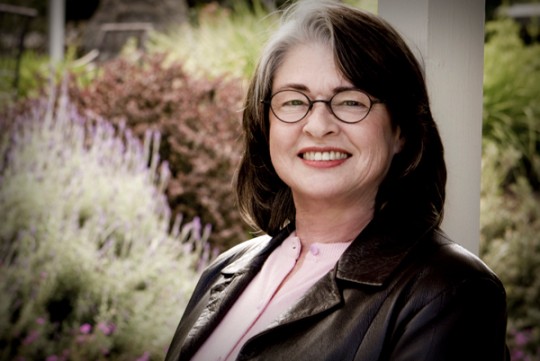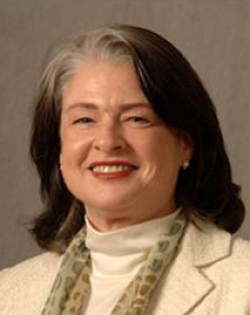Look for new roles for older citizens in an aging America, says Stanford’s Laura Carstensen.
Look for new roles for older citizens in an aging America, says Stanford’s Laura Carstensen
The country’s percentage of older people is rising rapidly. But that’s not just a problem, says Laura Carstensen, an expert on aging, it’s also a chance to improve transportation, redesign the suburbs and gain from the talents and experience of our elders.
 “It’s surprising to people when you say something like the number of older people in the world is the only natural resource that’s actually growing,” said Laura Carstensen, director of the Stanford Center on Longevity. (Photo: Courtesy of Stanford News Service)
“It’s surprising to people when you say something like the number of older people in the world is the only natural resource that’s actually growing,” said Laura Carstensen, director of the Stanford Center on Longevity. (Photo: Courtesy of Stanford News Service)
As the United States grows older – with 10,000 people turning 65 every day – and the number of people over 60 expected to surpass those under 15 within four years, common fears can play across the mind: dwindling Social Security, infirm elders, a smaller workforce and delayed retirement.
But that’s only part of the picture, said Laura Carstensen, director of the Stanford Center on Longevity.
“The shame is that we’re only looking at the problems,” she said. “There are problems, but we’re not looking for opportunities.”
“It’s surprising to people when you say something like the number of older people in the world is the only natural resource that’s actually growing,” she said.
In a talk this morning in Vancouver at the annual meeting of the American Association for the Advancement of Science, Carstensen will discuss not only the need for social and scientific accommodations for an aging population, but also new roles for older people.
“This is a looming crisis,” said Carstensen. “We will suffer many negative consequences if we don’t apply science and technology to solve the problems of older people, rebuild the environments in which we live – physical, societal and social – and find ways to put this resource [older people] to use.”
Revising social norms
Our culture is a starting point for change, said Carstensen. “The norms that tell us when to get an education, when to work, when to marry, when to retire evolved when life was half as long,” she said.
“If we continue to abide by all of those norms, people will pack all of life basically into the first 65 years, and it will be too pressured,” she said. “There will be too much to do. You’re raising kids, reaching the peak of your career, taking care of aging parents, all at the same time.
“And then, bam! You have 30 years of leisure. That’s a bad model, that’s not working for anybody.”
Money from 40 years of work can’t fund 30 years of retirement. Instead, Carstensen proposes to spread out work for more years, cut the number of working days per week and the hours worked per day, and integrate more sabbaticals into working schedules to give more time to other obligations.
“That will help governments [by alleviating] the strain on government programs to support people for decades longer than they were designed to do,” she said. “And it will help individuals, because life can get easier and feel better.”
Refocusing medicine
Sustaining the health of an aging population is an obvious issue. Carstensen identifies chronic, long-term diseases as a much bigger problem today than before. Most of the medical advances in the last century involved acute diseases that affected mainly young people, she said. There has been less progress on chronic diseases that inflict old people, like diabetes, arthritis and osteoporosis.
“Flash back 100 years, this wasn’t a big problem,” she said. “It wasn’t a big problem for society or most individuals, because you were dead before you would get those diseases. But today, they are problems.”
Redesigning the suburbs
As the country ages, our homes need to be redesigned, Carstensen said.
“The built environment that we live in today presumed a young population,” she said. “A population of relatively young people, who raised families of four children, lived in the suburbs in a big house with three or four bedrooms and a yard, where you have to have a car.
“Today, you have a couple or a widow, in their 80s or 90s, their kids are gone,” she said. “They’re living in a house that’s too big for them. It’s not good for the environment, in terms of energy consumption. And if they get to a point where they can’t drive, they’re essentially isolated.
“We often like to say the problem is old people,” Carstensen said. “The problem is the environment.”
She suggests redesigning the suburbs by providing better public transportation, retrofitting sidewalks to be safer and adding benches. Increased mobility would give residents more opportunities to continue to work within society.
Rethinking roles for older people
The growing number of aging people are more capable in some respects than their younger counterparts, said Carstensen.
“We have presumed, even in science, that age is associated with decline,” she said. “But it turns out that’s not true. The profile for aging is much more nuanced. There is decline, but there are also improvements – in emotional functioning, improvements in knowledge.
“If you have a large population of emotionally stable, knowledgeable and relatively healthy old people, that’s a good resource.”
One potential job would be to mentor younger generations. With millions of illiterate American children and an alarming number of failing high school students with busy or uneducated parents unable to help them, Carstensen envisions that the older and wiser can lend a hand.
“If we can channel the talents of older people into solving the problems of our educational system, we will win big,” she said. “Hugely big, in the sense of the future of the country, and future scientists and engineers.”
By Stephen Tung
Stephen Tung is a science-writing intern at the Stanford News Service.
###
Laura Carstensen

Laura Carstensen
Fairleigh S. Dickinson Jr. Professor in Public Policy, Professor of Psychology, Director, Stanford Center on Longevity
Laura L. Carstensen, PhD is Professor of Psychology at Stanford University, where she is also the Fairleigh S. Dickinson Jr. Professor in Public Policy. For more than twenty years her research has been supported by the National Institute on Aging, and in 2005 she was honored with a MERIT award. Carstensen is best known for socioemotional selectivity theory, a life-span theory of motivation. With her students and colleagues, she has published well over 100 articles on life-span development.
Her most current empirical research focuses on ways in which motivational changes influence cognitive processing. Dr. Carstensen is a fellow in a number of professional organizations including the Association for Psychological Science, the American Psychological Association and the Gerontological Society of America. She serves on the Board of Science Advisors to the Max Planck Institute for Human Development in Berlin, Germany and has chaired two studies for the National Academy of Sciences, resulting in The Aging Mind and When I’m 64. She is a member of the MacArthur Foundation’s Research Network on an Aging Society.
The recipient of numerous professional awards and honors, she has been selected as a Guggenheim Fellow, received the Richard Kalish Award for Innovative Research and the Distinguished Career Award from the Gerontological Society of America, as well as Stanford University’s Dean’s Award for Distinguished Teaching. Professor Carstensen received her BS from the University of Rochester and her PhD in Clinical Psychology from West Virginia University.
###
* Stanford University Medical Center integrates research, medical education and patient care at its three institutions – Stanford University School of Medicine, Stanford Hospital & Clinics and Lucile Packard Children’s Hospital.
** The above story is adapted from materials provided by Stanford University School of Medicine
________________________________________________________________




















